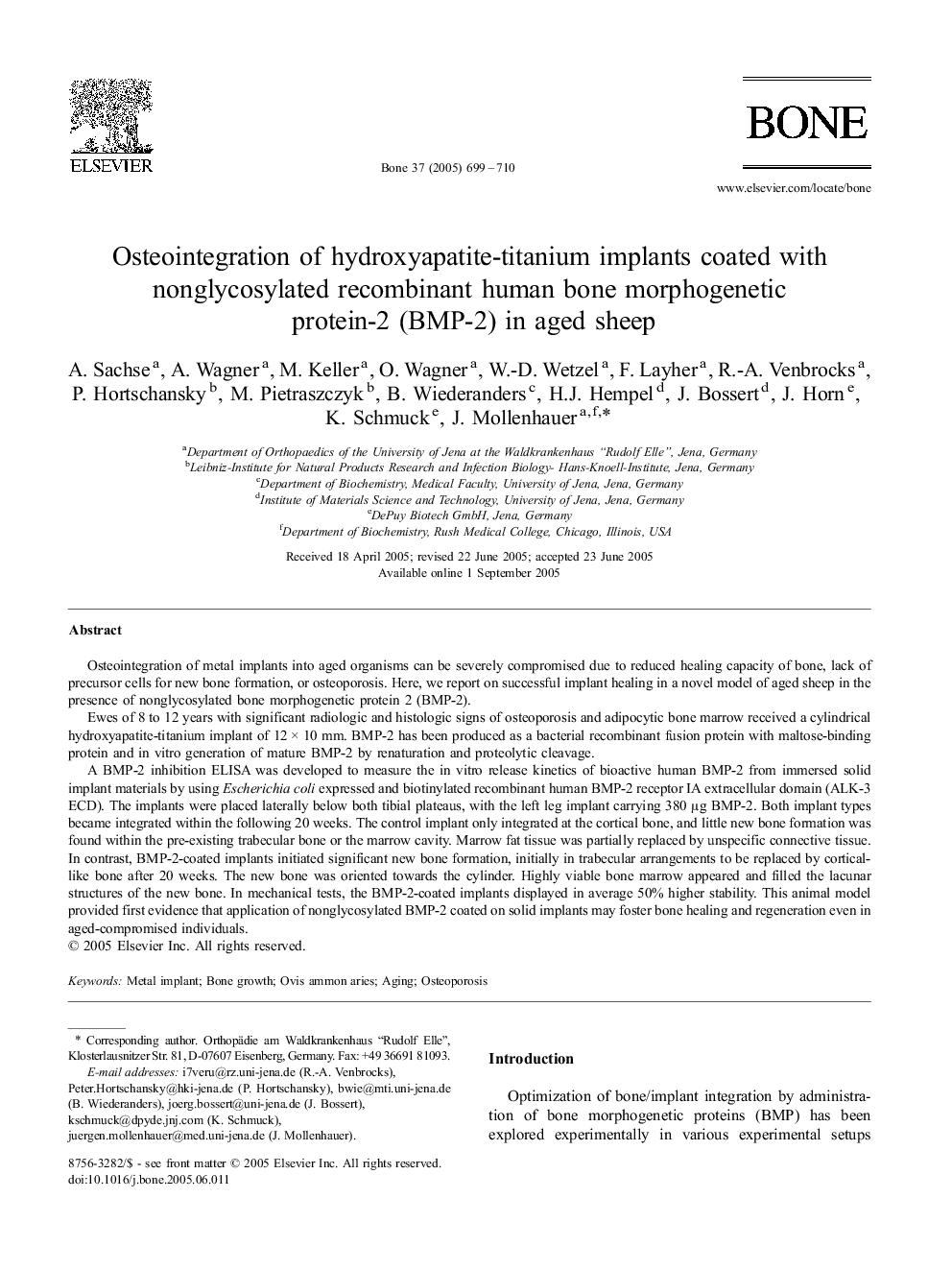| Article ID | Journal | Published Year | Pages | File Type |
|---|---|---|---|---|
| 9104394 | Bone | 2005 | 12 Pages |
Abstract
A BMP-2 inhibition ELISA was developed to measure the in vitro release kinetics of bioactive human BMP-2 from immersed solid implant materials by using Escherichia coli expressed and biotinylated recombinant human BMP-2 receptor IA extracellular domain (ALK-3 ECD). The implants were placed laterally below both tibial plateaus, with the left leg implant carrying 380 μg BMP-2. Both implant types became integrated within the following 20 weeks. The control implant only integrated at the cortical bone, and little new bone formation was found within the pre-existing trabecular bone or the marrow cavity. Marrow fat tissue was partially replaced by unspecific connective tissue. In contrast, BMP-2-coated implants initiated significant new bone formation, initially in trabecular arrangements to be replaced by cortical-like bone after 20 weeks. The new bone was oriented towards the cylinder. Highly viable bone marrow appeared and filled the lacunar structures of the new bone. In mechanical tests, the BMP-2-coated implants displayed in average 50% higher stability. This animal model provided first evidence that application of nonglycosylated BMP-2 coated on solid implants may foster bone healing and regeneration even in aged-compromised individuals.
Related Topics
Life Sciences
Biochemistry, Genetics and Molecular Biology
Developmental Biology
Authors
A. Sachse, A. Wagner, M. Keller, O. Wagner, W.-D. Wetzel, F. Layher, R.-A. Venbrocks, P. Hortschansky, M. Pietraszczyk, B. Wiederanders, H.J. Hempel, J. Bossert, J. Horn, K. Schmuck, J. Mollenhauer,
